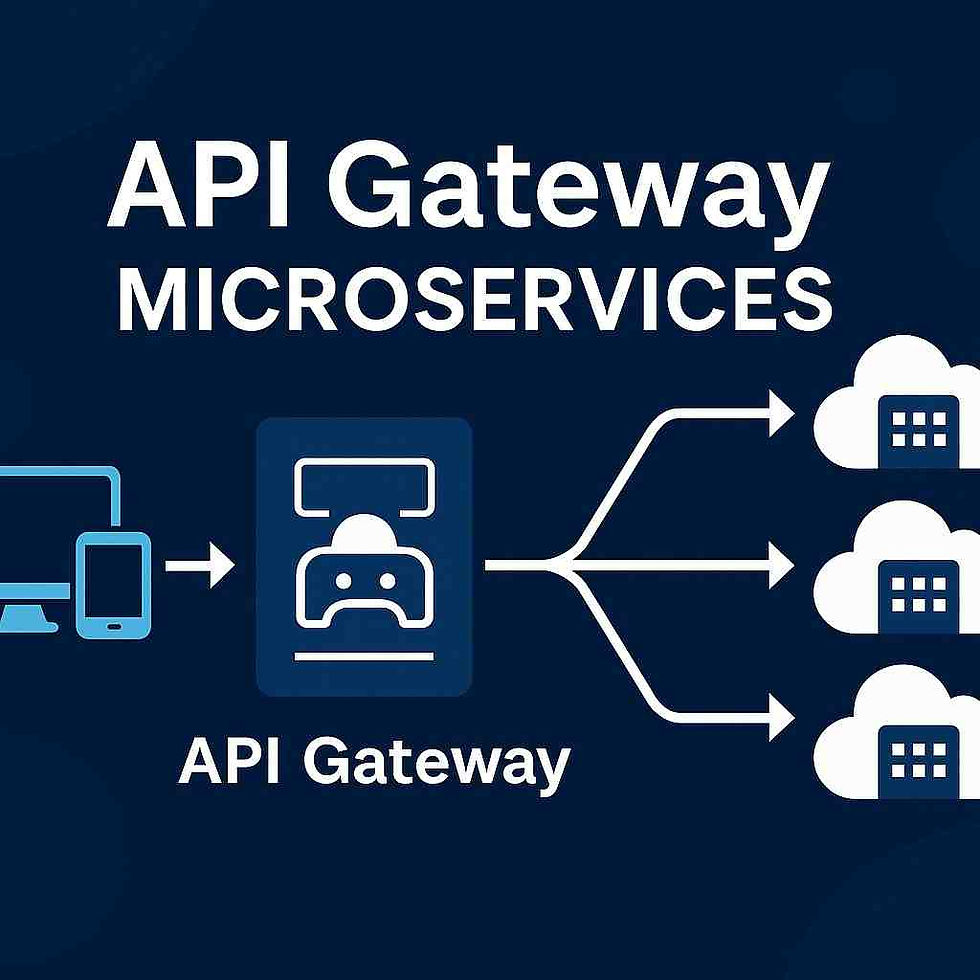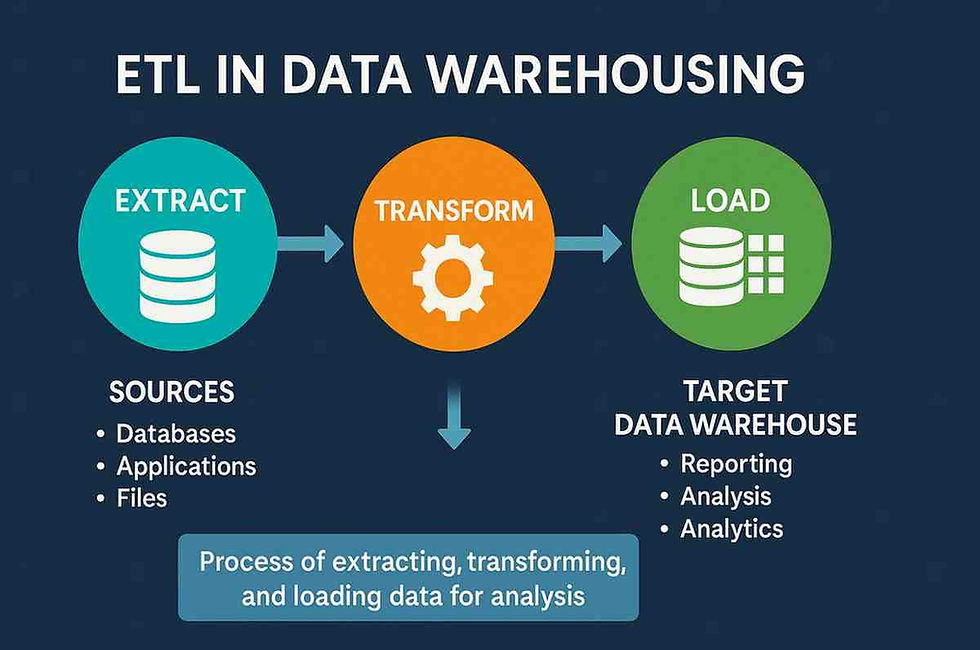Guide to UI in Testing: Automating with Ease
- Gunashree RS
- Sep 16, 2024
- 8 min read
In today’s competitive digital world, user interfaces (UIs) are often the first point of contact between an application and its users. Whether it’s a desktop application, a mobile app, or a web interface, users expect seamless and visually pleasing interactions. To meet these expectations, businesses must ensure that their UIs are functional, intuitive, and bug-free. This is where UI testing comes in—a critical component of the software development process that validates whether the application's graphical user interface (GUI) meets both functional and aesthetic requirements.
Testing UIs can be a complex and labor-intensive task, especially with the increasing number of platforms and devices. However, with tools like TestComplete, automating UI testing becomes more manageable and efficient. In this article, we’ll explore the role of UI in testing, why it’s important, and how TestComplete simplifies the entire process.
What is UI in Testing?
UI (User Interface) testing is the process of testing the graphical interface of an application to ensure it meets the desired specifications and provides a positive user experience. It focuses on validating how users interact with the application’s visual elements—buttons, menus, forms, and links—ensuring that everything looks and behaves as expected.
Key Objectives of UI Testing:
Functionality: Ensuring that all UI elements such as buttons, text fields, and dropdowns function correctly.
Visual Appeal: Checking that UI components are properly aligned, correctly sized, and visually consistent across different devices and platforms.
Responsiveness: Verifying that the UI responds correctly to different screen resolutions, orientations, and input methods.
Usability: Ensuring the interface is intuitive, easy to navigate, and offers a pleasant user experience.

UI testing is essential because it validates the end-user experience, and since users heavily rely on the interface, any flaw can lead to dissatisfaction, frustration, and a drop in user retention.
Why is UI Testing Important?
In a world where first impressions count, a poor user experience can drive customers away from your product. If the UI is clunky, unresponsive, or visually unappealing, users will be quick to abandon the application in favor of a competitor’s product. UI testing ensures that users can interact smoothly with the interface, preventing potential issues from affecting the overall user experience.
Key Reasons Why UI Testing is Critical:
Ensures Application Usability: UI testing helps ensure that the application is user-friendly and intuitive. Buttons, text fields, menus, and images should work as intended, providing a seamless navigation experience.
Verifies Cross-Platform Compatibility: Applications today must function across a variety of platforms, browsers, devices, and screen sizes. UI testing helps ensure compatibility and consistent performance across different environments.
Detects Visual Bugs: UI testing catches any visual bugs, such as broken layouts, misaligned buttons, or incorrect colors, ensuring the design is consistent and visually appealing.
Improves User Experience: The smoother and more intuitive the UI, the better the user experience. Effective UI testing helps eliminate glitches that could hinder this experience.
Reduces Post-Release Defects: By catching and resolving UI-related bugs early in the development cycle, businesses can prevent costly defects from appearing post-release.
Automating UI Testing with TestComplete
Manual UI testing can be time-consuming, repetitive, and error-prone, especially as applications grow in complexity. This is where automation comes in. TestComplete, a powerful UI test automation tool, allows teams to automate the testing of desktop, mobile, and web applications, making UI testing more efficient and scalable.
Why Choose TestComplete for UI Automation?
TestComplete provides several features that make automating UI testing easy for both technical and non-technical users. It offers a comprehensive set of tools for creating and running UI tests, ensuring that all visual components of an application function correctly across different platforms.
1. Powerful Object Identification
TestComplete’s industry-leading object identification engine, powered by AI, allows testers to accurately identify and test UI elements across platforms. This means that even if the underlying code changes, your tests will still work without needing frequent updates.
2. Scripted and Scriptless Testing
TestComplete is flexible, supporting both scripted and scriptless testing methods. Whether you are a beginner with no coding experience or an expert in automation, TestComplete offers a solution that works for everyone.
Scriptless Testing: TestComplete’s Record & Replay feature allows testers to record actions and play them back across multiple environments without writing code.
Scripted Testing: For more advanced users, TestComplete supports several programming languages including JavaScript, Python, VBScript, and C#, allowing the creation of more complex test scripts.
3. Cross-Browser and Cross-Platform Testing
TestComplete supports testing on over 1,500 environments, including different browsers, operating systems, and devices. This means you can test how your UI performs on different screen resolutions, orientations, and browser versions, ensuring a consistent experience for all users.
4. Test Execution in Parallel
TestComplete allows you to run tests in parallel on both physical and virtual machines. By distributing tests across multiple environments, you can significantly reduce testing times while increasing test coverage.
5. Detailed Reporting and Debugging
After executing UI tests, TestComplete provides detailed reports with snapshots, logs, and error messages, making it easier for testers to pinpoint issues and share the information with development teams for faster resolution.
UI Testing Made Easy with TestComplete Features
TestComplete simplifies the process of automating UI tests with several key features designed to enhance both efficiency and accuracy.
1. Record and Replay for Scriptless Testing
TestComplete’s Record & Replay feature allows users to automate UI testing without writing a single line of code. This feature is ideal for non-technical testers who can quickly create automated tests by recording their interactions with the UI and replaying them across multiple devices, browsers, and platforms.
2. Keyword-Driven Testing
Keyword-driven testing enables testers to create modular tests using pre-defined actions or “keywords” such as click, double-click, or drag-and-drop. This approach abstracts the underlying code, allowing non-programmers to create complex automated tests without needing to understand the application’s source code.
3. Data-Driven Testing
Data-driven testing allows you to run tests with multiple sets of input data, ensuring that your application works as expected for a wide variety of inputs. TestComplete can pull data from external sources like Excel, CSV files, and databases, which is particularly useful for testing form submissions, user input fields, and e-commerce checkout flows.
4. Scripted Testing for Advanced Users
For those who prefer to write their tests, TestComplete supports JavaScript, Python, C#, VBScript, and other popular programming languages. You can either create new UI tests from scratch or convert recorded test scripts into your preferred programming language for further customization.
5. Built-In Testing Frameworks
TestComplete comes equipped with built-in frameworks for desktop, web, and mobile test automation. These frameworks eliminate the need to manually build and maintain testing environments, allowing you to start testing faster.
Enhancing UI in Testing with Parallel Execution and Test Coverage
When it comes to testing, time and coverage are key factors. With TestComplete, you can run tests in parallel across multiple environments, improving test efficiency and increasing the number of browsers, devices, and resolutions you can test against.
1. Parallel Test Execution
Running tests in parallel allows you to execute multiple test scripts simultaneously on different machines or virtual environments. This reduces the time required to complete large test suites and ensures that your UI works consistently across multiple configurations.
2. Cross-Platform Coverage
TestComplete’s cloud-based testing environments provide access to over 1,500 different browser, operating system, and device combinations, ensuring that your UI performs optimally for all users, regardless of their chosen platform.
3. Real-Time Reporting
With TestComplete, detailed test reports include screenshots, error logs, and step-by-step breakdowns of test cases, making it easier to diagnose issues quickly. These reports also help teams track test results, generate actionable insights, and streamline the bug resolution process.
Challenges of UI Testing and How TestComplete Overcomes Them
Automating UI testing can be complex due to the constant changes in user interfaces, cross-platform compatibility issues, and the need for frequent updates. TestComplete addresses these challenges by providing robust tools that simplify the entire process.
1. Handling Dynamic and Evolving UIs
As applications grow, the UI may change frequently, causing automated tests to break. TestComplete’s AI-powered object recognition ensures that UI tests remain stable, even when the underlying code changes, minimizing the need for test maintenance.
2. Cross-Browser and Device Testing
Testing UI elements across various browsers and devices can be time-consuming and resource-intensive. With TestComplete, you can execute tests on a wide range of environments, ensuring that your application functions correctly for all users.
3. Balancing Speed and Coverage
TestComplete allows for parallel test execution across multiple machines, significantly reducing the time it takes to run comprehensive UI tests while maximizing test coverage. By automating repetitive tasks, TestComplete frees up testers to focus on more critical aspects of the application.
Conclusion
UI testing plays a vital role in delivering a seamless, user-friendly experience. With users increasingly relying on applications for various tasks, businesses cannot afford to have UI bugs or malfunctions. By automating UI testing with a tool like TestComplete, teams can ensure their applications work flawlessly across multiple devices, platforms, and browsers.
Whether you’re a non-technical tester using the Record & Replay feature or an experienced automation engineer writing complex scripts, TestComplete provides the flexibility and power needed to streamline the entire UI testing process. With parallel execution, cross-platform testing, and detailed reporting, TestComplete allows teams to catch bugs early, improve efficiency, and deliver high-quality software with confidence.
FAQs
1. What is UI testing?
UI testing is the process of validating that an application's graphical user interface functions as expected, including how users interact with buttons, forms, and other visual elements.
2. Why is UI testing important?
UI testing is important to ensure the application is user-friendly, visually appealing, and functional across all devices and platforms, providing a seamless user experience.
3. What is the difference between manual and automated UI testing?
Manual UI testing requires testers to manually interact with the application to verify its functionality, while automated UI testing uses tools like TestComplete to create repeatable tests that can be executed across various environments.
4. How does TestComplete simplify UI testing?
TestComplete simplifies UI testing through features like Record & Replay, parallel execution, AI-powered object recognition, and support for multiple programming languages, enabling both technical and non-technical users to automate tests.
5. What is keyword-driven testing in TestComplete?
Keyword-driven testing in TestComplete allows testers to build modular tests using pre-defined actions (keywords) like clicking or dragging, making it easier to create tests without writing code.
6. Can TestComplete be used for cross-platform testing?
Yes, TestComplete supports cross-platform testing, enabling teams to test applications across a wide range of devices, browsers, and operating systems.
7. What programming languages are supported by TestComplete?
TestComplete supports several programming languages, including JavaScript, Python, C#, VBScript, DelphiScript, and JScript.
8. How does TestComplete handle UI changes in the application?
TestComplete uses AI-powered object recognition to ensure that tests remain stable even when the underlying UI code changes, reducing the need for frequent test updates.
Key Takeaways
UI testing ensures that an application's graphical interface is user-friendly, functional, and visually appealing.
Automating UI testing with TestComplete reduces testing time, improves test accuracy, and enhances cross-platform compatibility.
TestComplete offers both scriptless and scripted testing options, catering to both non-technical and technical users.
Parallel test execution and cross-platform testing expand test coverage and reduce test times.
Detailed reporting features in TestComplete help teams quickly identify and resolve UI issues.




Comments